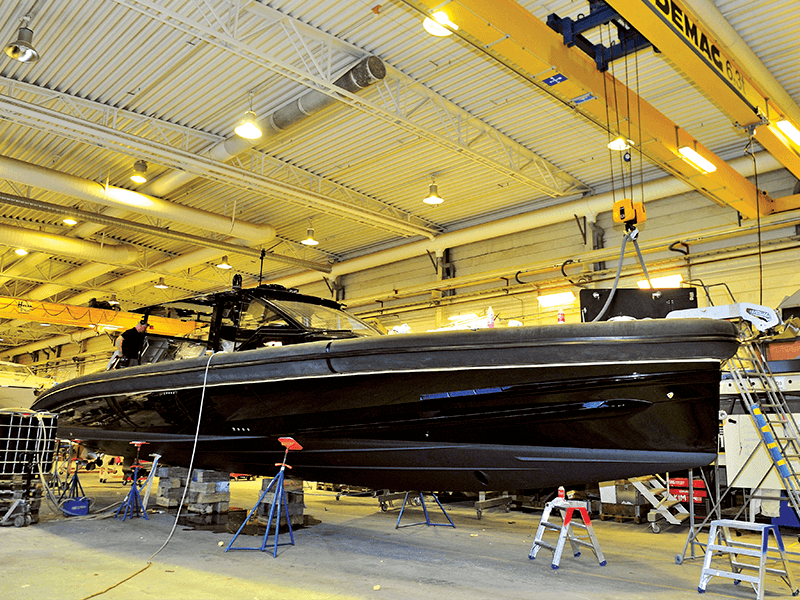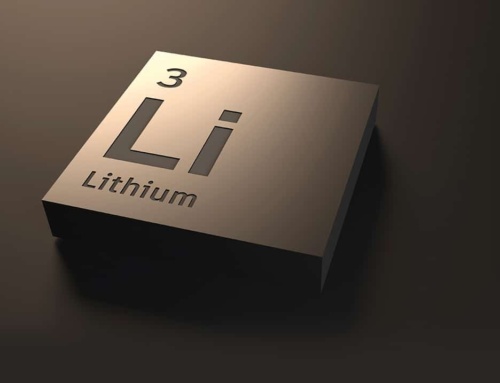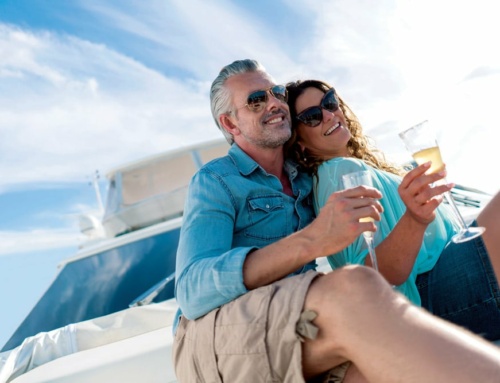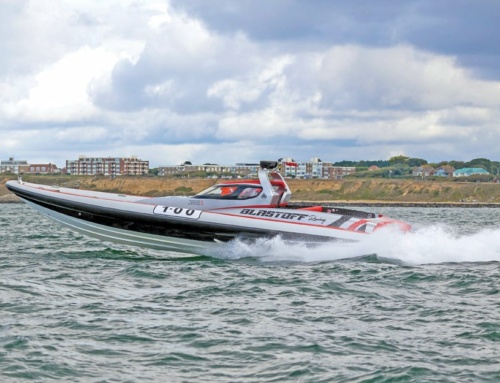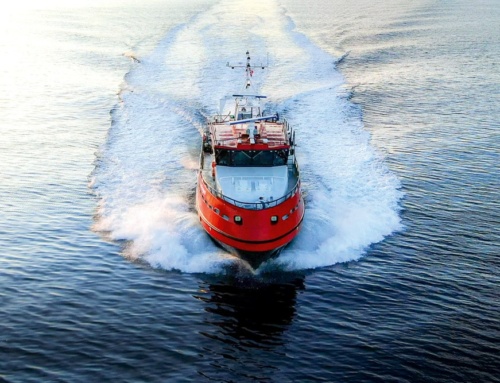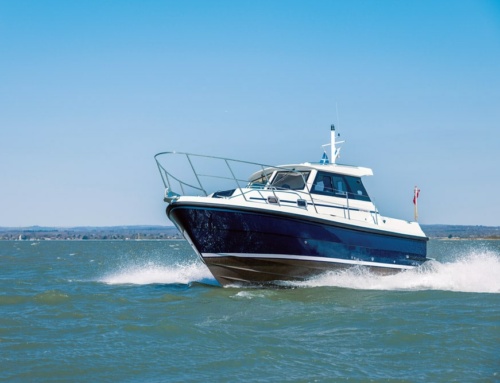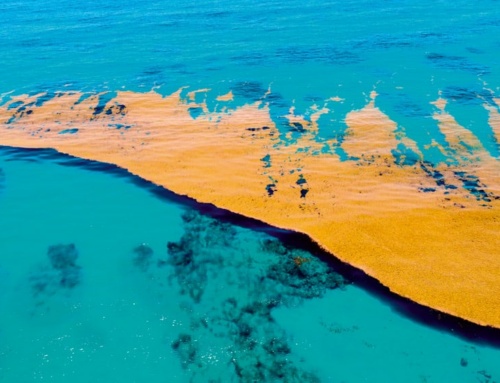50 Years of Windy
In this, (2016) the 50th anniversary year of the iconic Scandinavian boatbuilder, Simon Everett takes a look at their new boatyard and the boats they are now building.
The name Windy is one that I remember from the earliest days of my boating. They were already boats with an enviable reputation for being fast and able to handle a rough sea. Those core requirements have remained at the heart of Windy throughout the 50 years, and some of their models have become living legends in terms of performance and seaworthiness. All Windy boats have this same DNA at their heart, some with greater emphasis on cruising comfort than out and out performance, while others are real shifting machines that can still entertain guests in comfort, but in both cases, the Windy way is uncompromising on quality.
The roots of the company are firmly embedded in Norwegian soil, but like the Norsemen of old they needed to expand, and in 2000 Windy bought the former Royal Storebro shipyard in Västervik, in neighbouring Sweden. It was a shrewd move as Windy had outgrown their previous facility years before, but not only did they gain a larger piece of land with purpose-built infrastructure, but they also employed much of the Storebro workforce, who were highly skilled, time-served craftsmen who had been building boats that reflected the royal warrant on the trademark. Such an opportunity very rarely crops up, and Windy’s management were quick to seize on it.
Up until the acquisition of the new shipyard, Windy had been limited in both their ability to produce large numbers of boats and the size of boat they could accommodate. With this new facility, which started production in 2001, the plans for expansion could be realised and new boats, including the 58ft Zephyros, which was already designed at the Arundel yard, were now able to come to fruition and started to come out of the doors.
It was such a happy coincidence that Storebro wanted to sell the shipyard at the same time that Windy were looking for somewhere to move to. Here, in the east of Sweden, there was an established tradition of quality yacht building and high-end engineering, with the SAAB aero-engineering plant just a few miles away. The skill base that the region is renowned for is exactly what Windy needed, and the mindset and ability to build with high precision and care for the finished product were directly transferable to building the boats Windy had in mind.
With the move came the opportunity for a restructuring programme. The bigger boats, from 39 feet upwards, are all built here in the Västervik shipyard, as well as the custom build ‘special projects’ division. These are one-off builds that show the true capabilities of Windy. Many are so secretive that they are backed by non-disclosure agreements and the moulds are documented before being destroyed afterwards. This is a side of Windy that the majority of boaters don’t get to see or know about. They don’t just build the sports cruisers and grand tourers that put the company on the map. There is a line of superyacht tenders and limousine tenders that are built to super-luxury levels with literally anything able to be incorporated – the kind of input that you would find in limousines or supercars such as diamond studding and hand-stitched upholstery using the finest hides. An 8m luxury tender in this class is likely to cost in the region of £2 million, which is why we mere mortals are not privy to their existence, but it serves as a perfect illustration of the meticulous attention to detail that Windy can achieve.
Each model has a dedicated team to build it from start to finish and each of the models is built using resin infusion for about 85% of the total build, in a bid to save weight, and gain strength and rigidity, and as an environmental measure to limit the amount of chemicals in the atmosphere. Resin infusion keeps everything contained far better than open production ever can.
Something that Windy have always done, from the very outset, is to give every surface a proper finish, even those hidden surfaces that will never see the light of day again. There are numerous hidden differences that make a tangible contribution to the character of the boat on the water and set a Windy apart from alternative makers. Other efforts are included to provide pride in workmanship, as the craftsmen (because that is what they are) need to be able to feel proud of their work. Rather than cut corners to save cost, or man-hours, workflow patterns have been devised that achieve the same end. For instance, the wiring is run through conduits that are built into the framework, which removes the possibility of the wiring coming into contact with water as far as possible.
Scrutinising the fit and finish of the boat during its construction, you can begin to understand the uncompromising approach that Windy have. Unless you can demonstrate boatbuilding to the very highest level, you cannot expect to be awarded the kind of prestigious special project builds that Windy are now being entrusted with.
For the production craft, the moulds are built and housed within massively strong jigs for every moulding. The overengineered support ensures that there is no movement for absolute accuracy, and perfect alignment is achieved when two mouldings are introduced to each other, rather than having to ‘make them fit’. Likewise, each panel of cloth is cut by a certain Leonard Beckstrom, who has been doing the job for 23 years. He works without gloves, from choice, because he says he can feel the quality of the material before he cuts it, and on more than one occasion he has highlighted shortcomings in the material before it ever got anywhere near being used to build a boat. He can be likened to a chef inspecting his ingredients before they get through the kitchen door.
I was extremely lucky to see the new Blackhawk 52 undergoing the last finishing touches before being sea-trialled the following day. The sharpness and accuracy of the strakes are enviable and don’t come through rushed lamination, especially in black, which will show even the tiniest imperfection. This is the first Blackhawk built, and is a development of the SR52 superyacht tender with a higher performance and extreme offshore capability. These aggressively shaped strakes have been extensively computer-modelled for dimensions and placement to prevent the bow from plunging in even the worst of conditions. We have been granted permission by the owner to publish the photographs so as to illustrate what Windy are capable of and how their production craft benefit from the same ethos as these phenomenal custom-built boats.
After 50 years of top-end boatbuilding, Windy are still cementing their place among the highest echelons of the industry, with finesse throughout, and employing the services of some of the finest naval architects and designers in the world. It will be interesting to see what the next 50 years bring. I hope I am still around to see it!
Contact:

